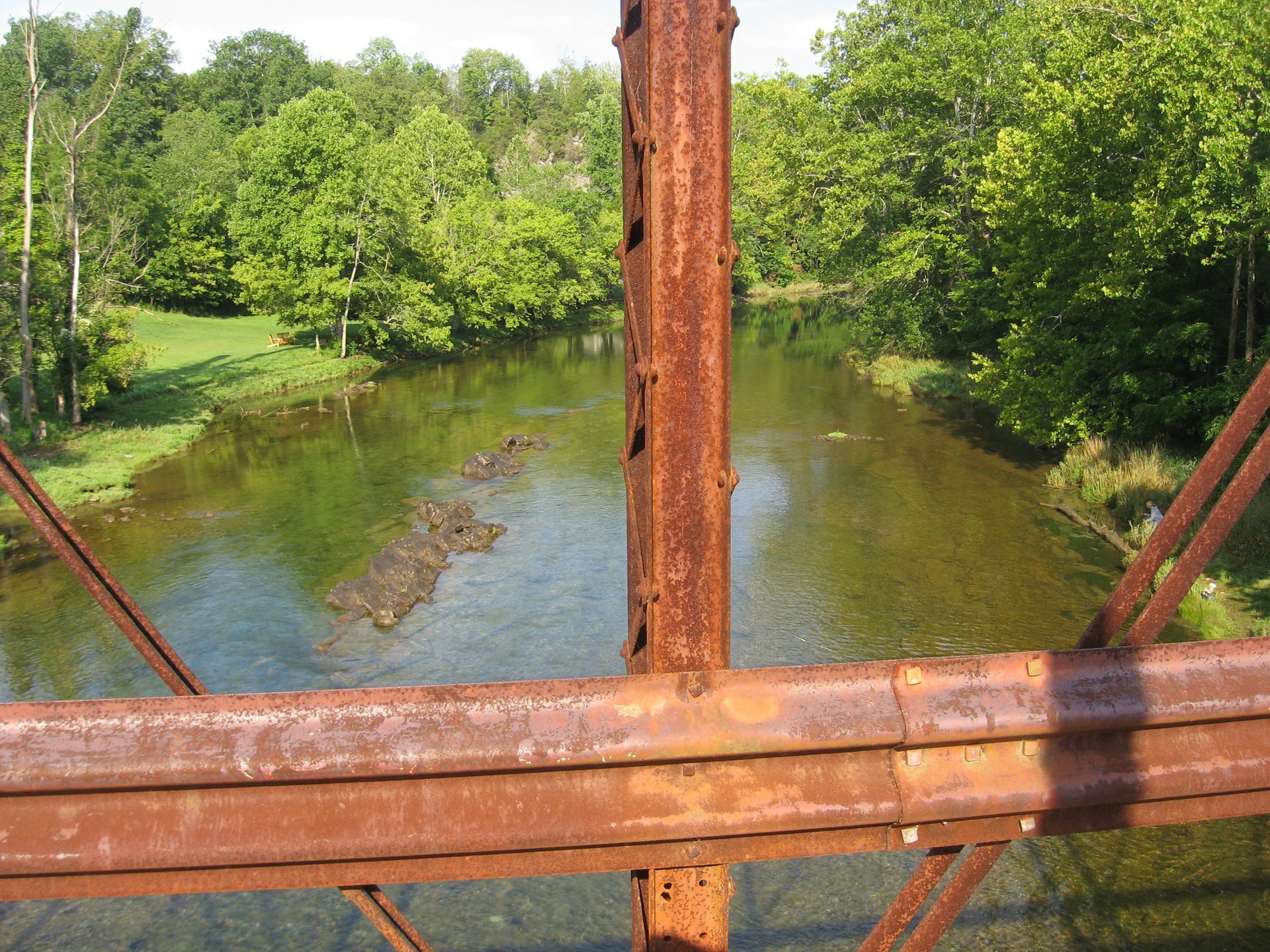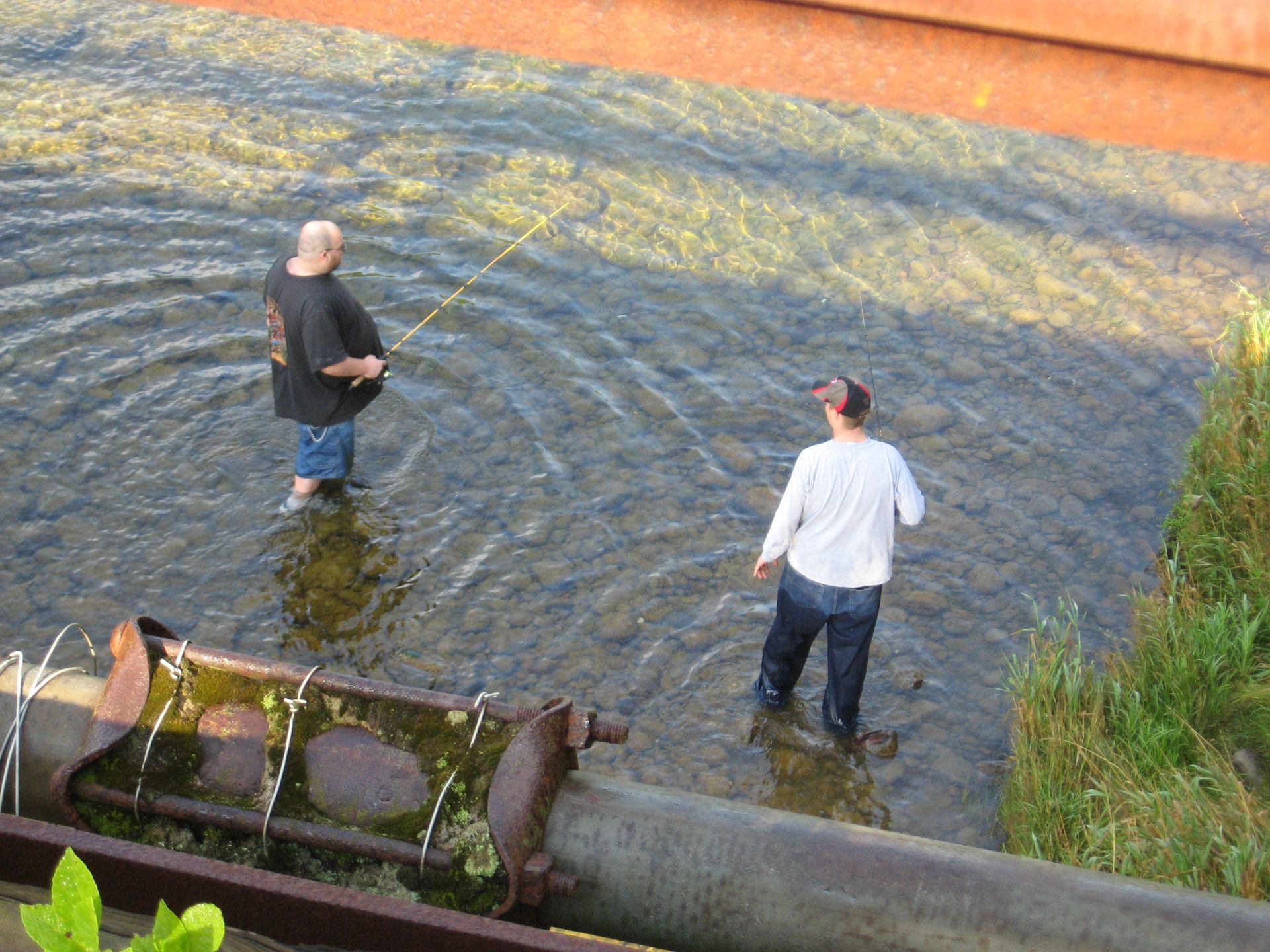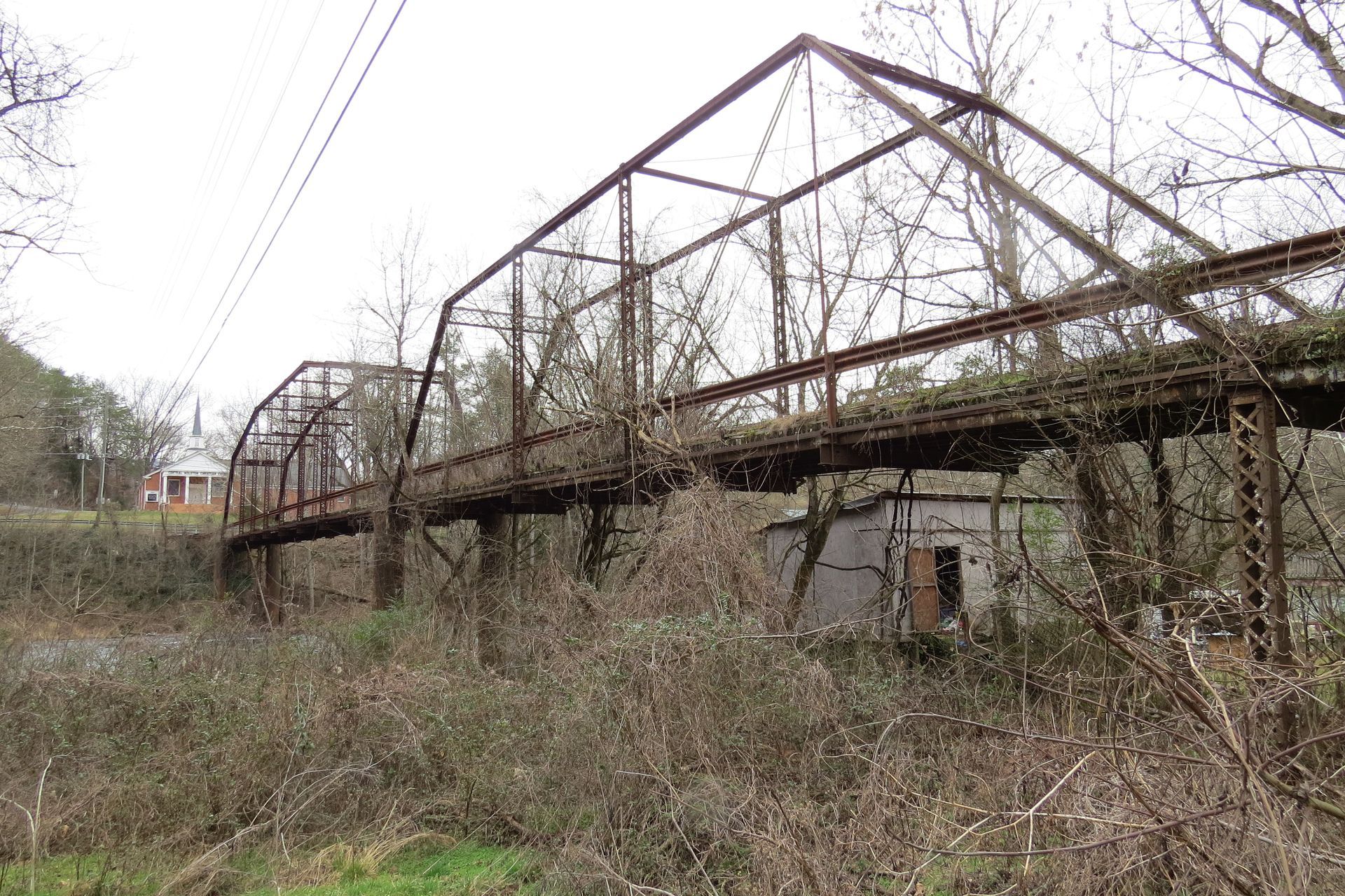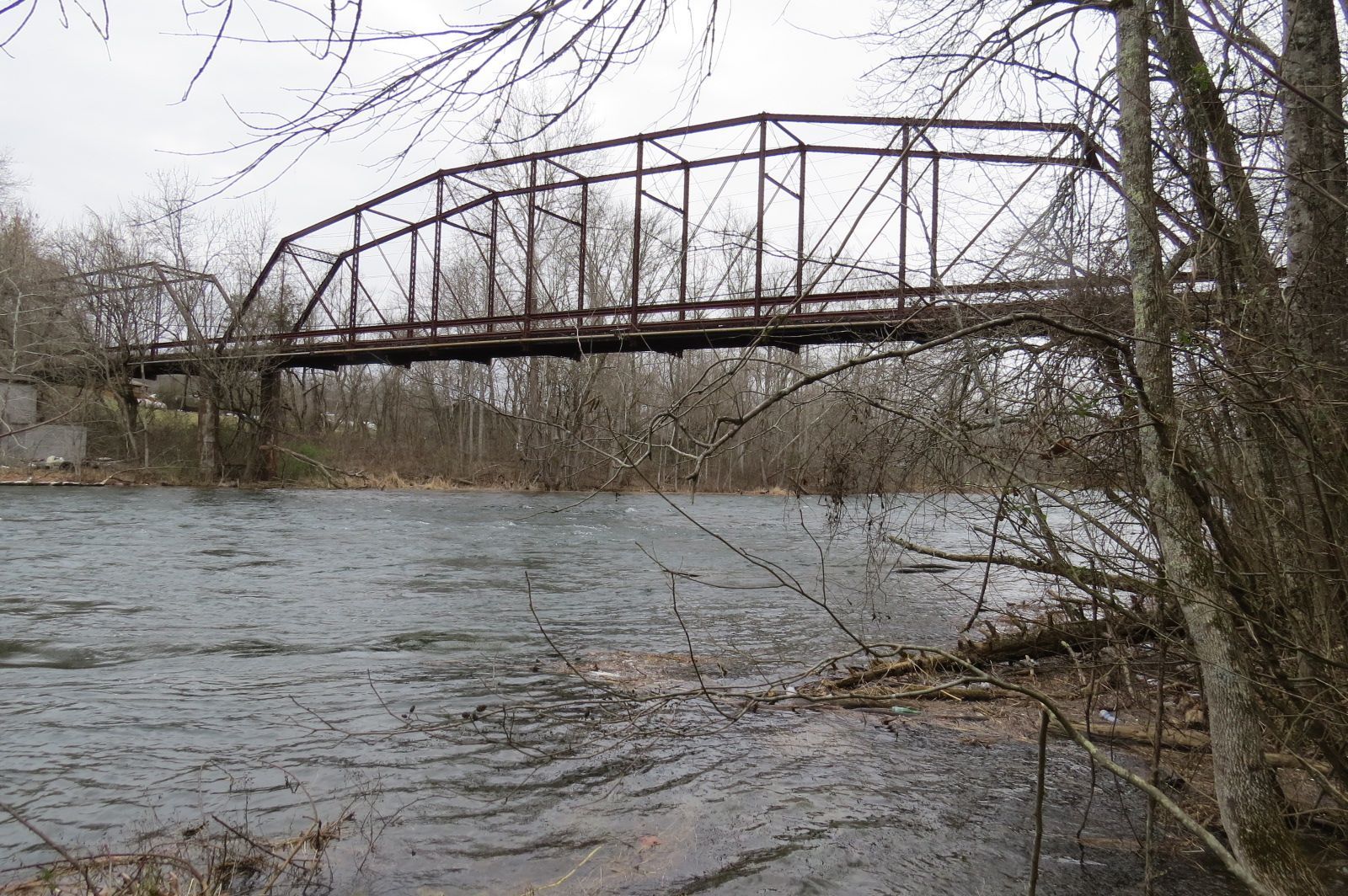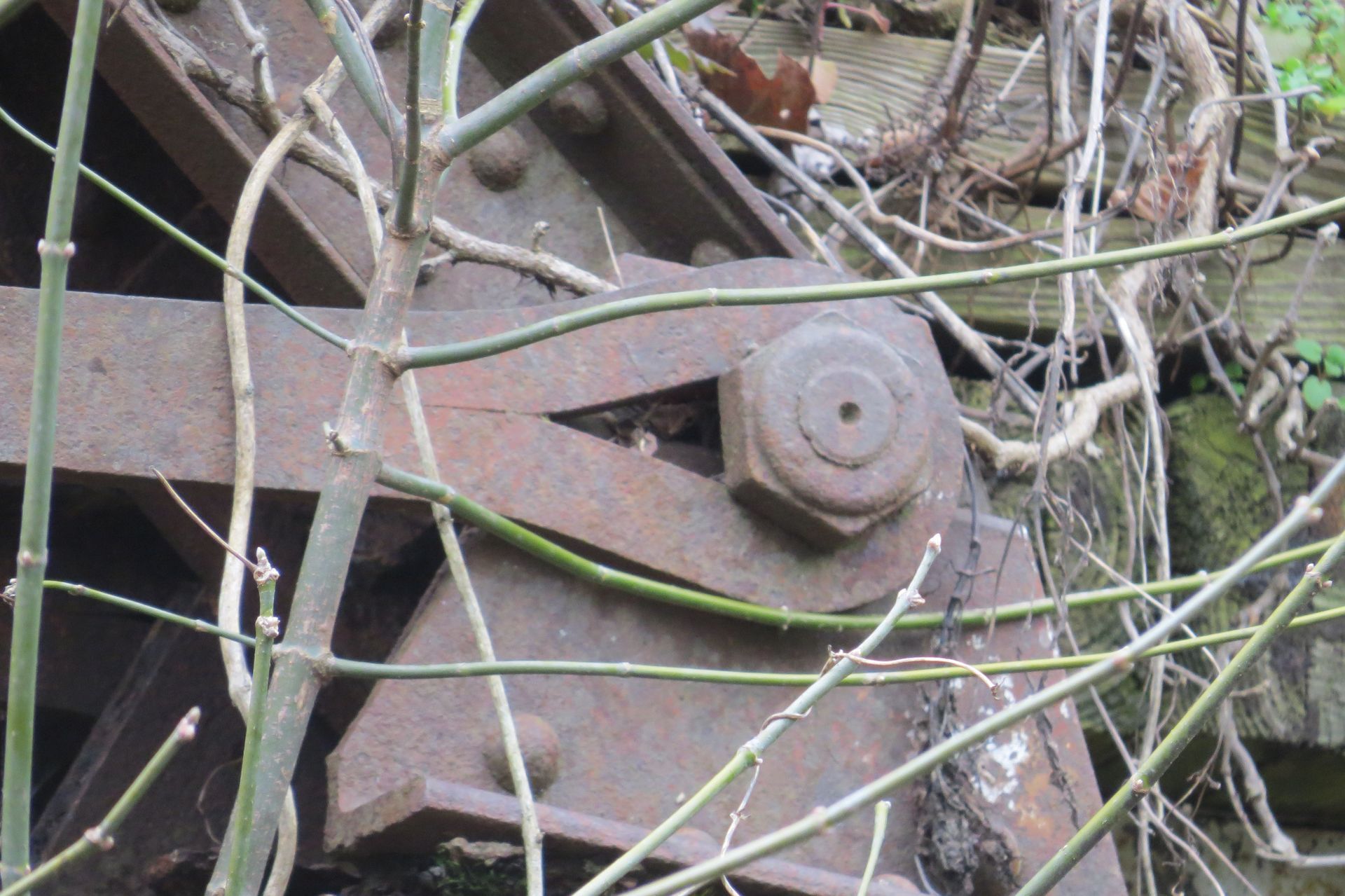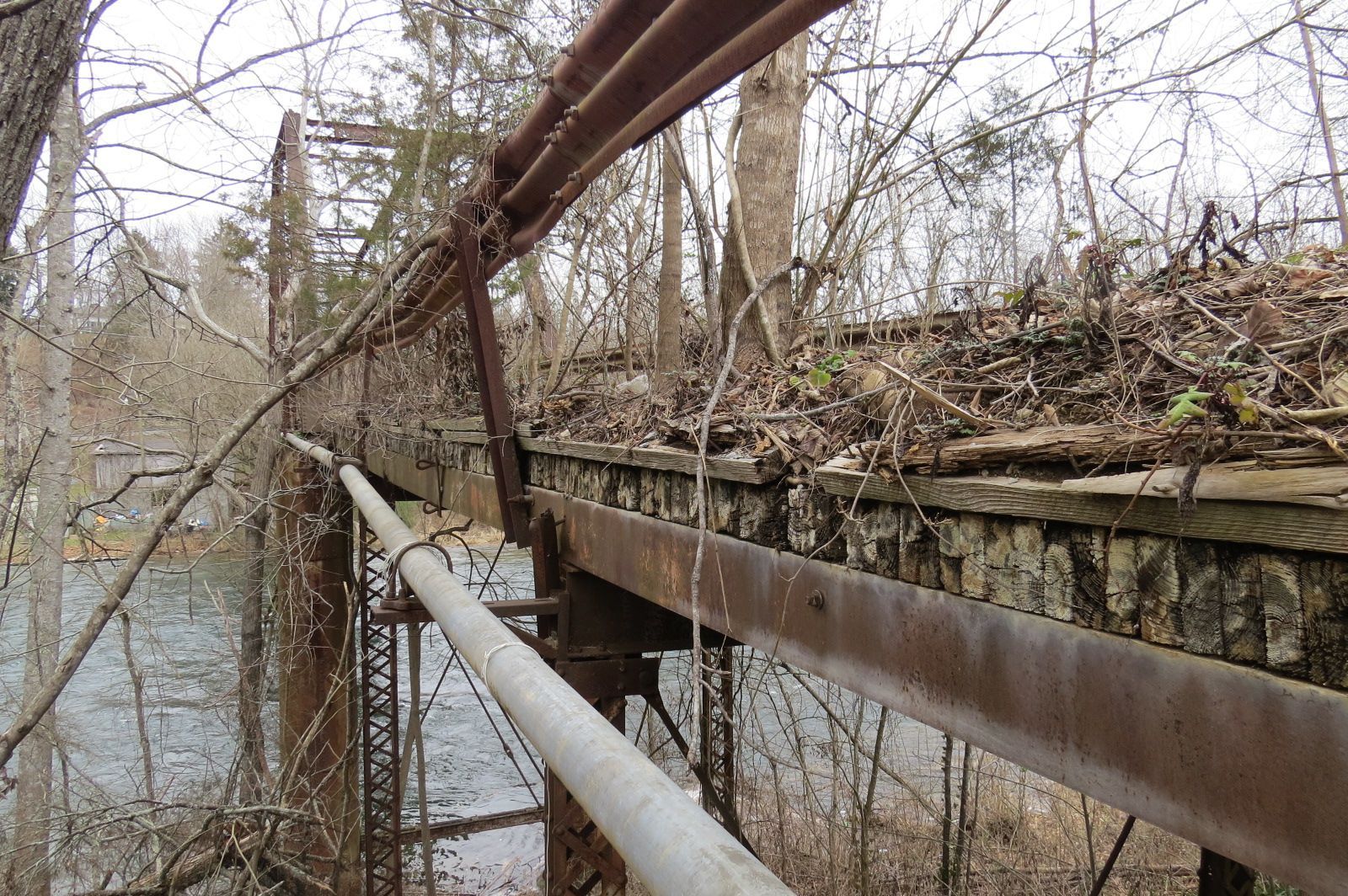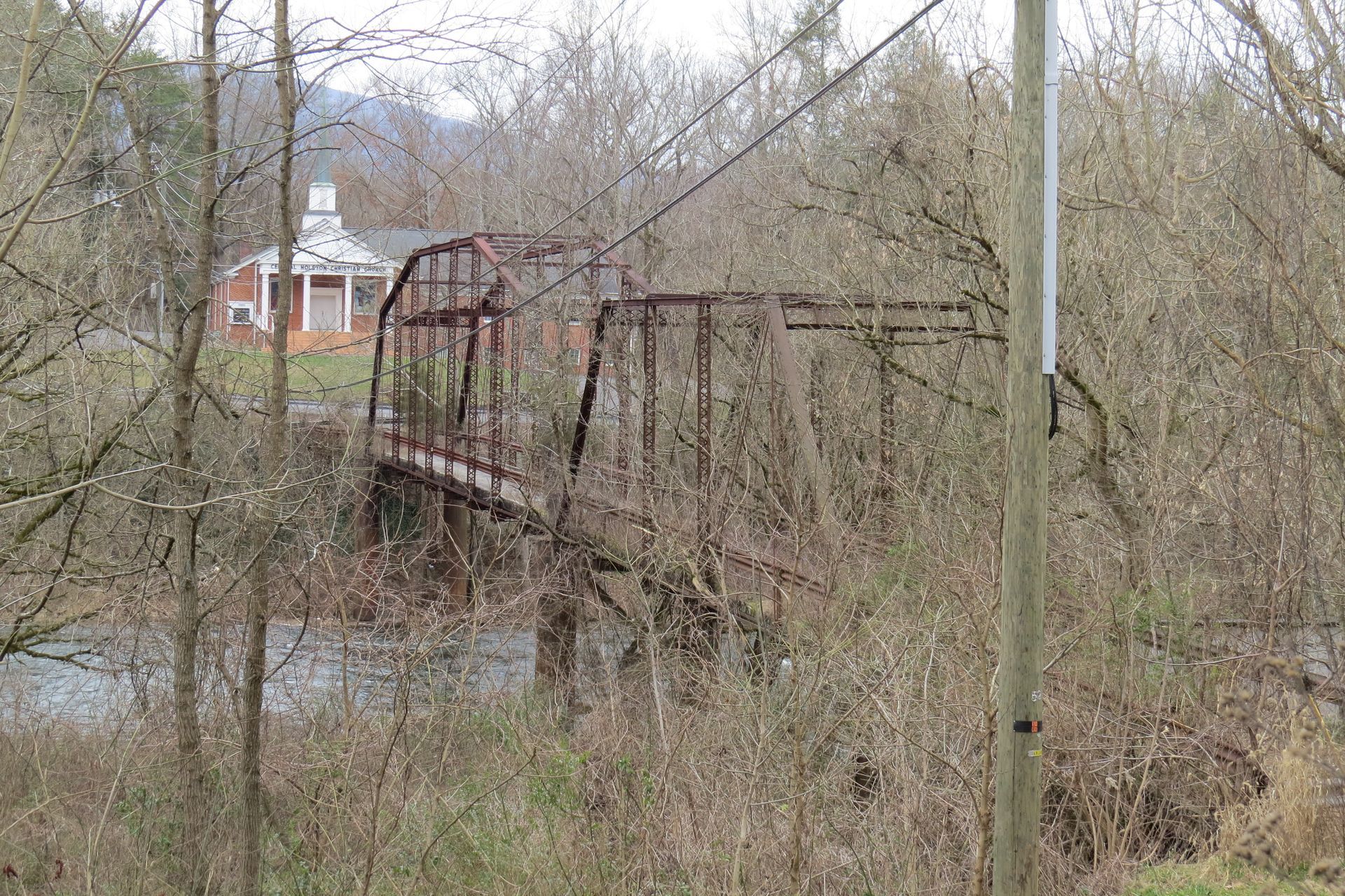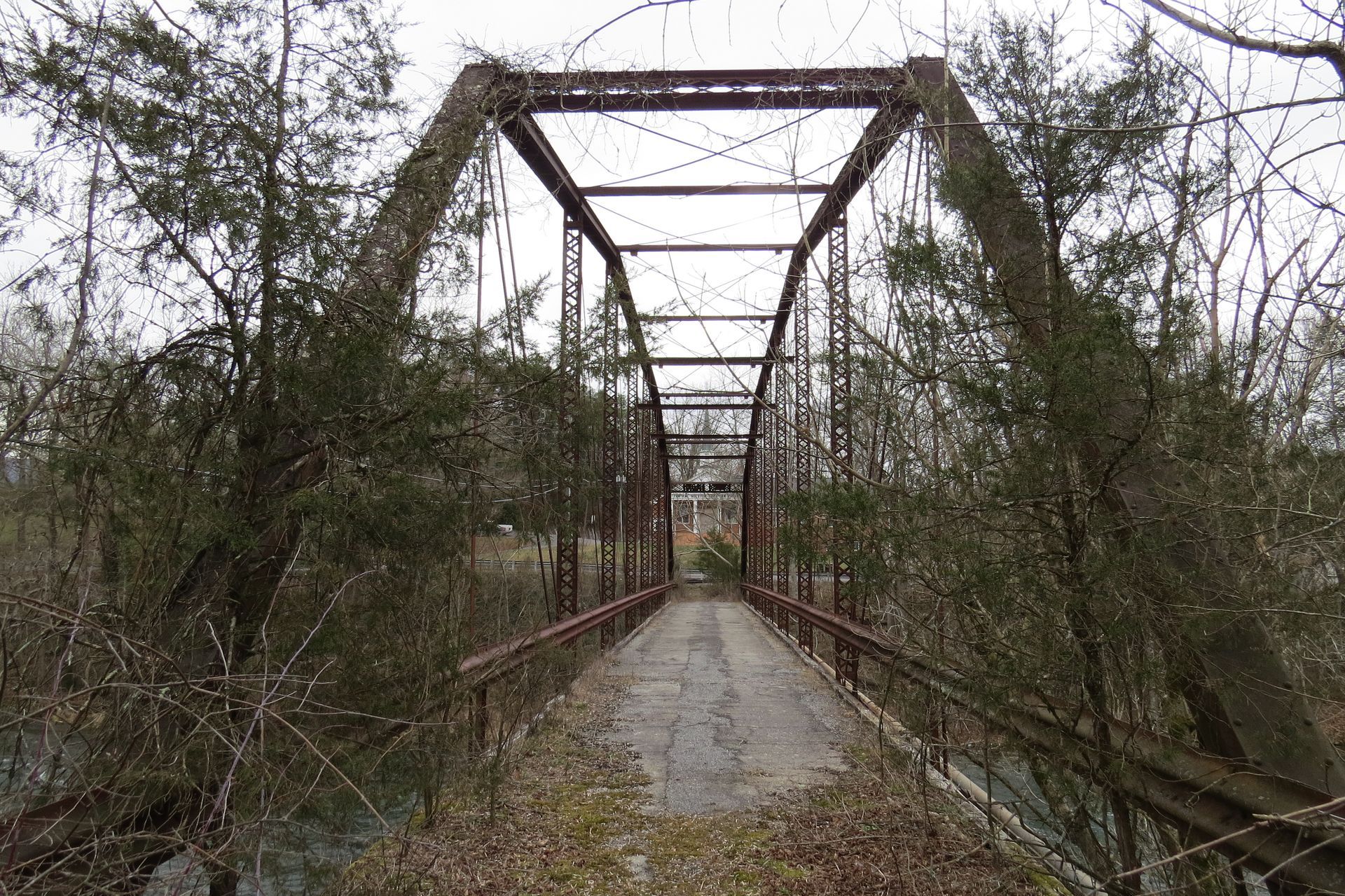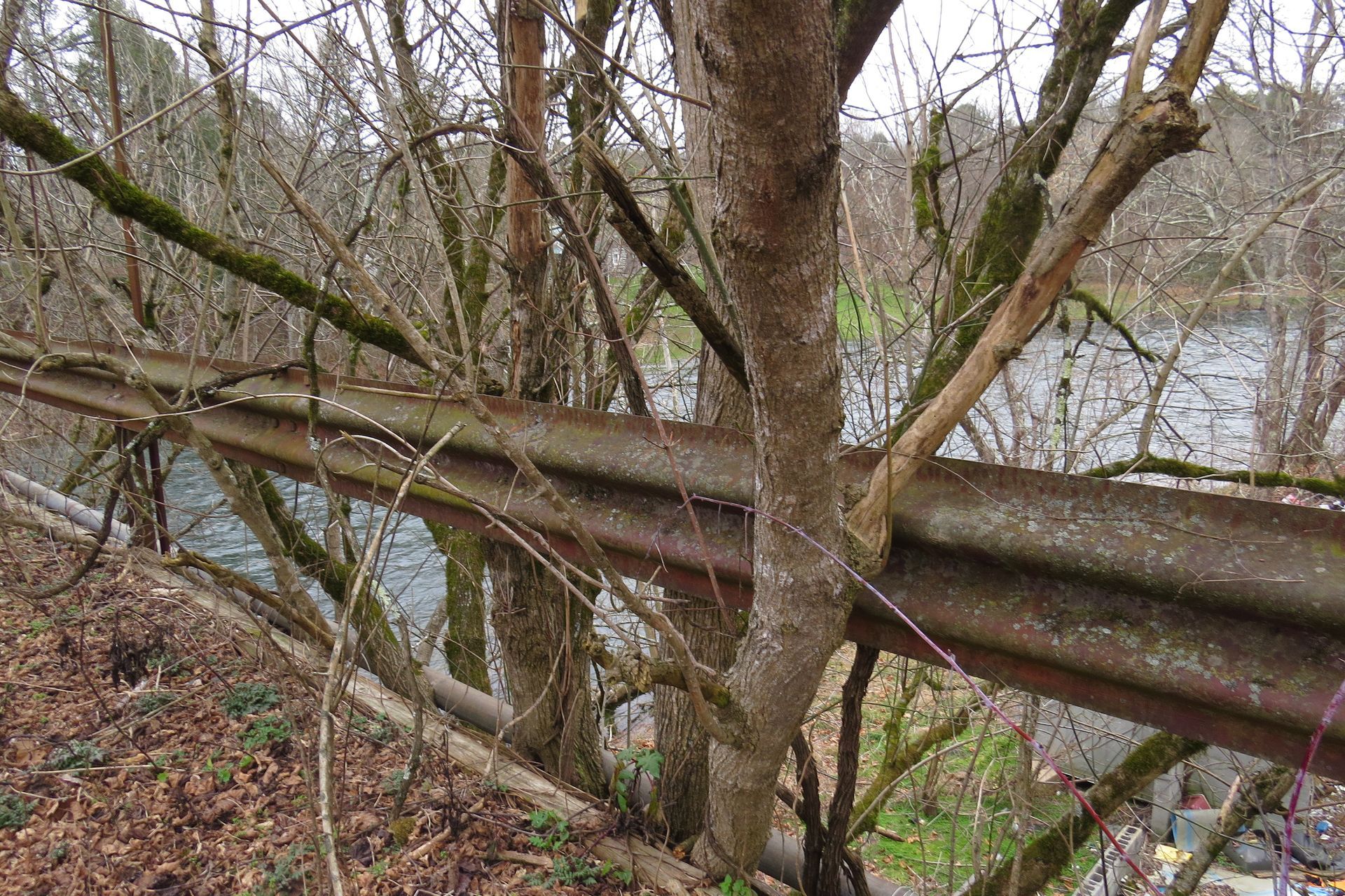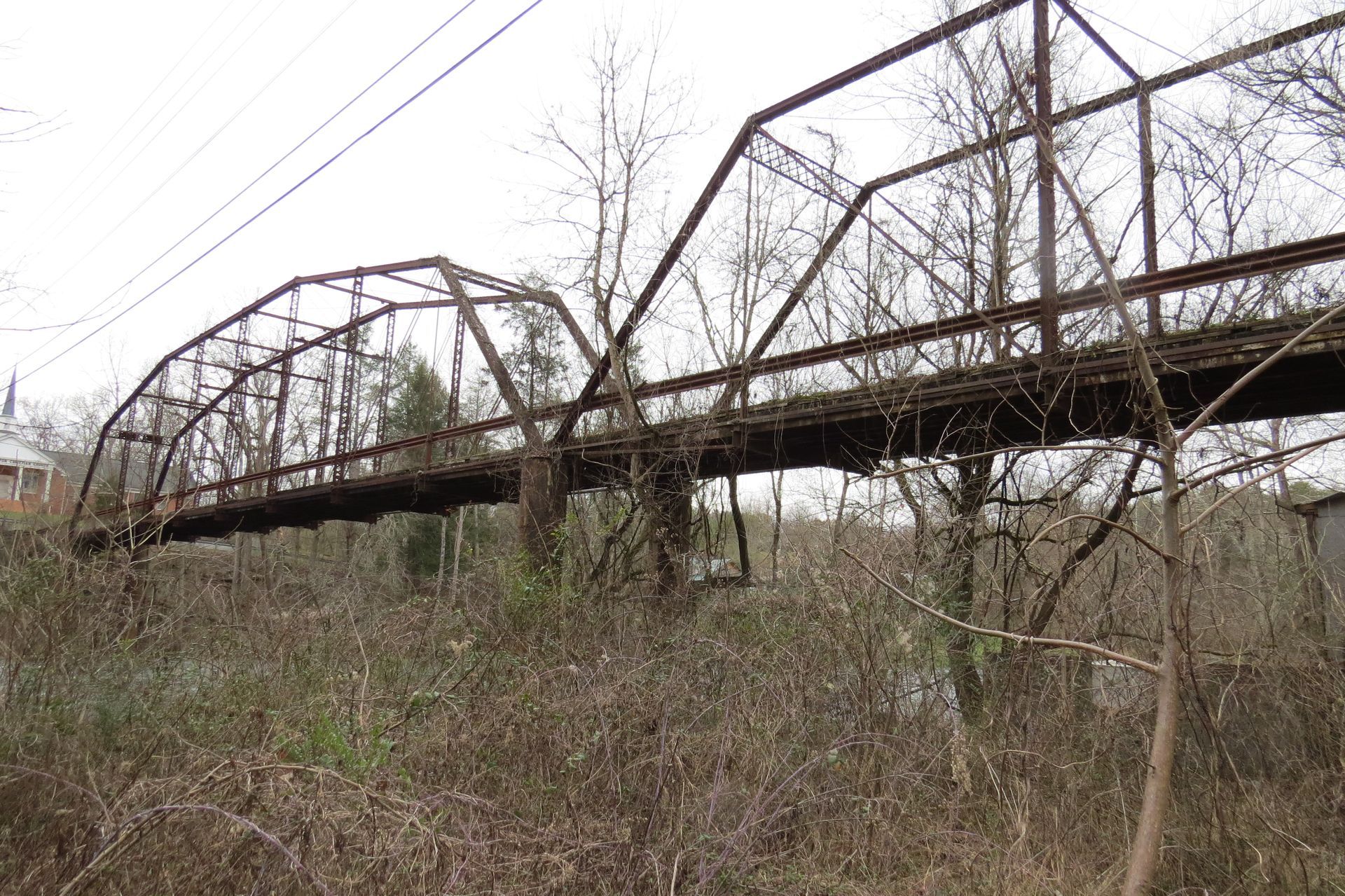BUILDING
BRIDGES
THE IRON AND CONCRETE WINGS OF AMERICA
Central Holston River Bridge, Sullivan County, TN
One of Upper East Tennessee's Oldest Bridges Hidden from View -- until the winter
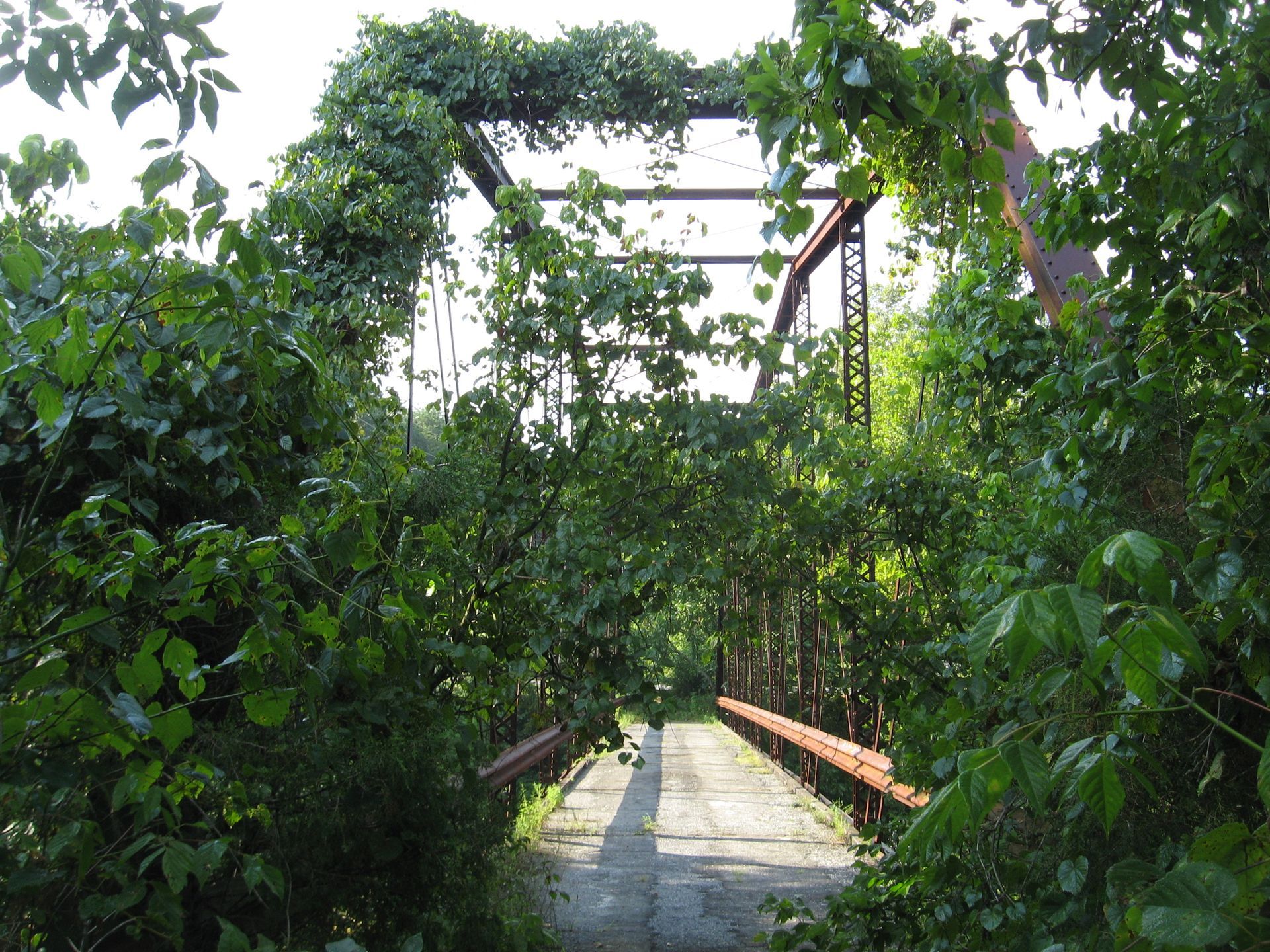
In the spring and summer, passersby usually don't see the one-lane Central Holston Bridge. It fits very snuggly in the weeds, vines and foliage that love to hug the South Holston River as it quietly traverses eastern Sullivan County.
But in a winter setting when the leaves are gone, remnants of one of the oldest settlers of the county is seen, uneventfully spanning the rapids of the river as it's done for the past 120 years.
Built in 1902-03, the Central Holston Bridge shares its name with the church on its south end, the Central Holston Christian Church and therein lies a tale. Ellen Boyer is one of many neighbors who share a kinship with the bridge and she knows the story well. She's traced her family back to both John Sevier and Davy Crockett more than 200 years ago and her family helped found the Central Holston Christian Church on the banks of the river. Today, she's one of its proudest members, remembering a fun fact about one-lane bridges common to the early 1900's.
"If my daddy saw another car across the river on the other side approaching the bridge on Sand Bar Road or Riverview Road," she laughs, "he would speed up so that he could get onto the bridge first and have the right-of-way. He'd also do that for the other two one-lane steel bridges downriver at Weaver Pike and Old Weaver Pike. It was always a contest to see who'd get the right-of-way first."
She also knows how the Central Holston Bridge got its name. "The way it is positioned, when you come across the bridge from the north side headed south, the church is right in your path. Back then, you could drive right up to the front doors of the church before veering off to go around the building. That's the way the church founders wanted it. Because it was in the "central position" at the end of the bridge, they called it the Central Holston Christian Church and the crossing became the Central Holston Bridge. The name for both has endured all these years."
"It's the church history that's tied to visitors crossing the bridge that led right up to the front doors."
The bridge was built by the Cope Bridge Company of Chattanooga, Tennessee, the only bridge in Tennessee ever built by the company. According to historical records at the Tennessee Department of Transportation, bridge builders Morris Cope and Oliver Cope were also agents for the Columbus Bridge Company of Ohio and the Converse Bridge Company also of Chattanooga, which itself built the other two nearby Pratt-style through truss bridges downriver across the South Holston River in Sullivan County. Many of the steel beam fabrications for Central Holston were thought to be made by the Lomas Forge and Bridge Company of Cincinnati, and the Siskin Steel Company of Chattanooga.
The Central Holston Bridge consists of one pin-connected Camelback-style Pratt through truss span over the river channel, and a shorter Pratt through truss span, also pin-connected over the north shore flood plain. Steel truss bridges with beams that were connected by pins were common at the turn of the 19th century, but were deemed unreliable when heavier vehicles began using those bridges in the early 1900's. Most bridge manufacturers determined that beams connected with rivets were much stronger, but many pin-connected bridges still exist.
The Central Holston Camelback through truss span across the river is 171 feet long and 11.5 feet wide, and the Pratt span over the flood plain is 99 feet long, also 11.5 feet wide. The Camelback span is resting on four tubular supports, two on either side of the river, which was common for truss bridges built in the late 1800's. Central Holston's original decking is timber planks laid back to back which are still visible, later covered by a sheet of asphalt.
The beloved bridge is still with us today. "People love the Central Holston Bridge," Boyer says. "It was one of only two ways to head north to Bristol from the Hickory Tree and Possum Creek areas in front of Holston Mountain for many years."
Under Section 106 of the National Historic Preservation Act, the Central Holston Bridge is eligible to be listed under the National Register of Historic Places because of its construction method, location and the company which built it.

